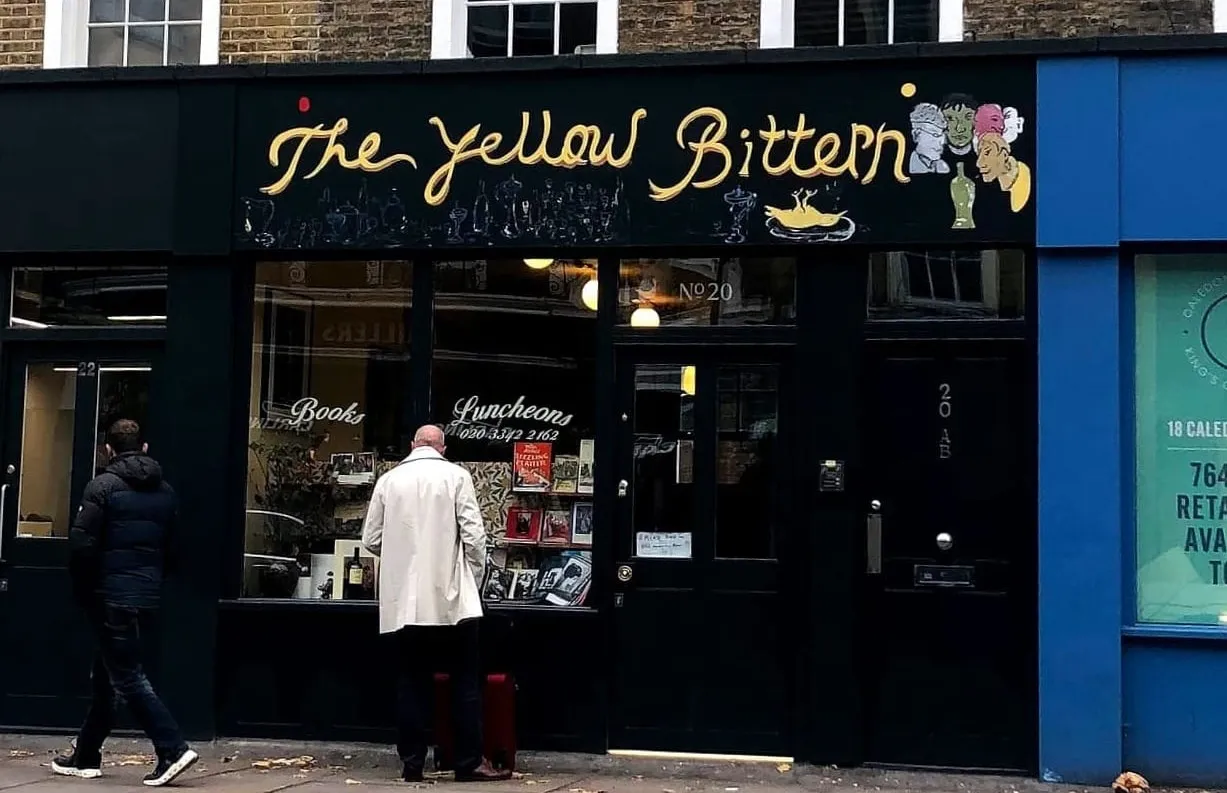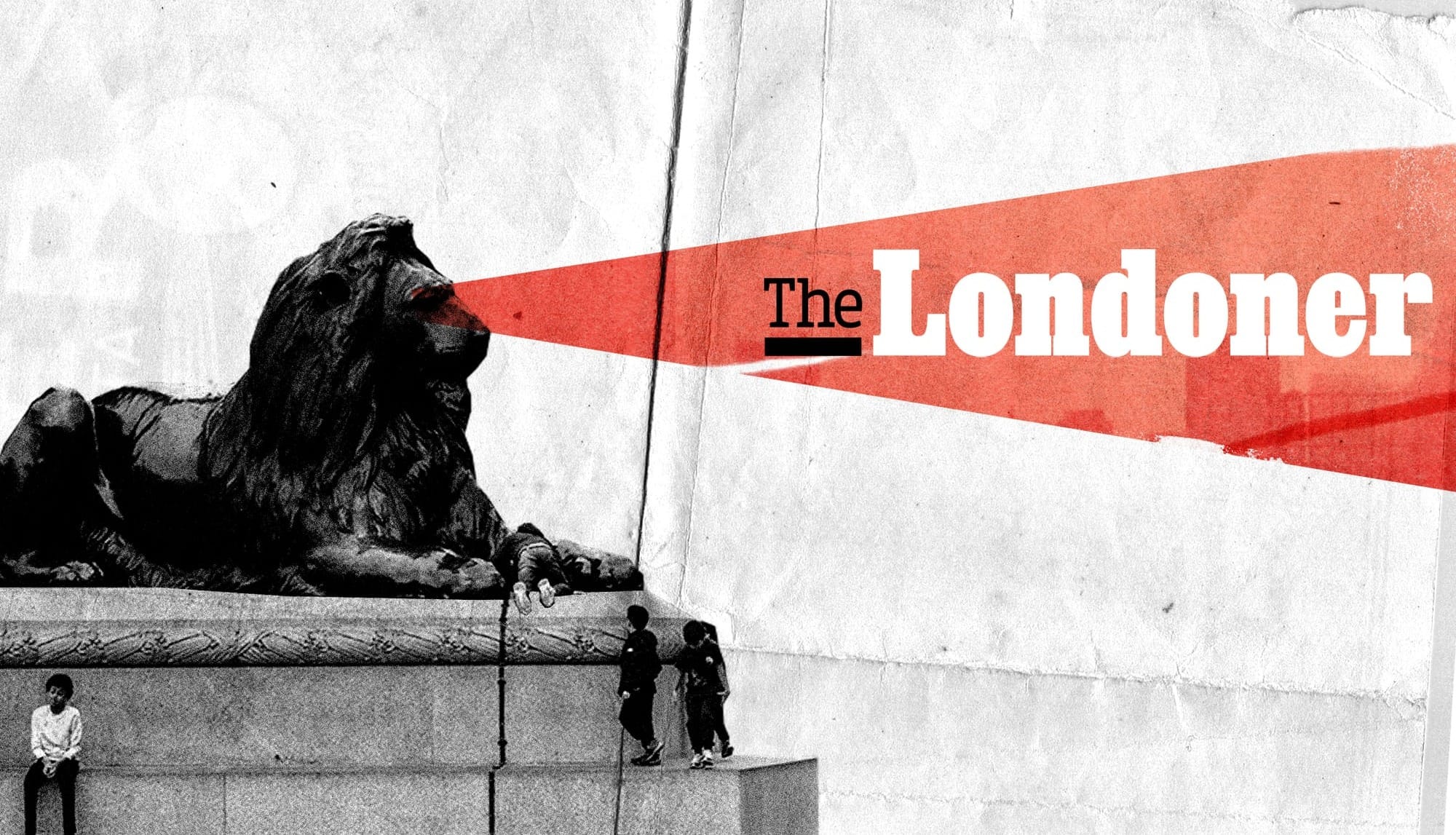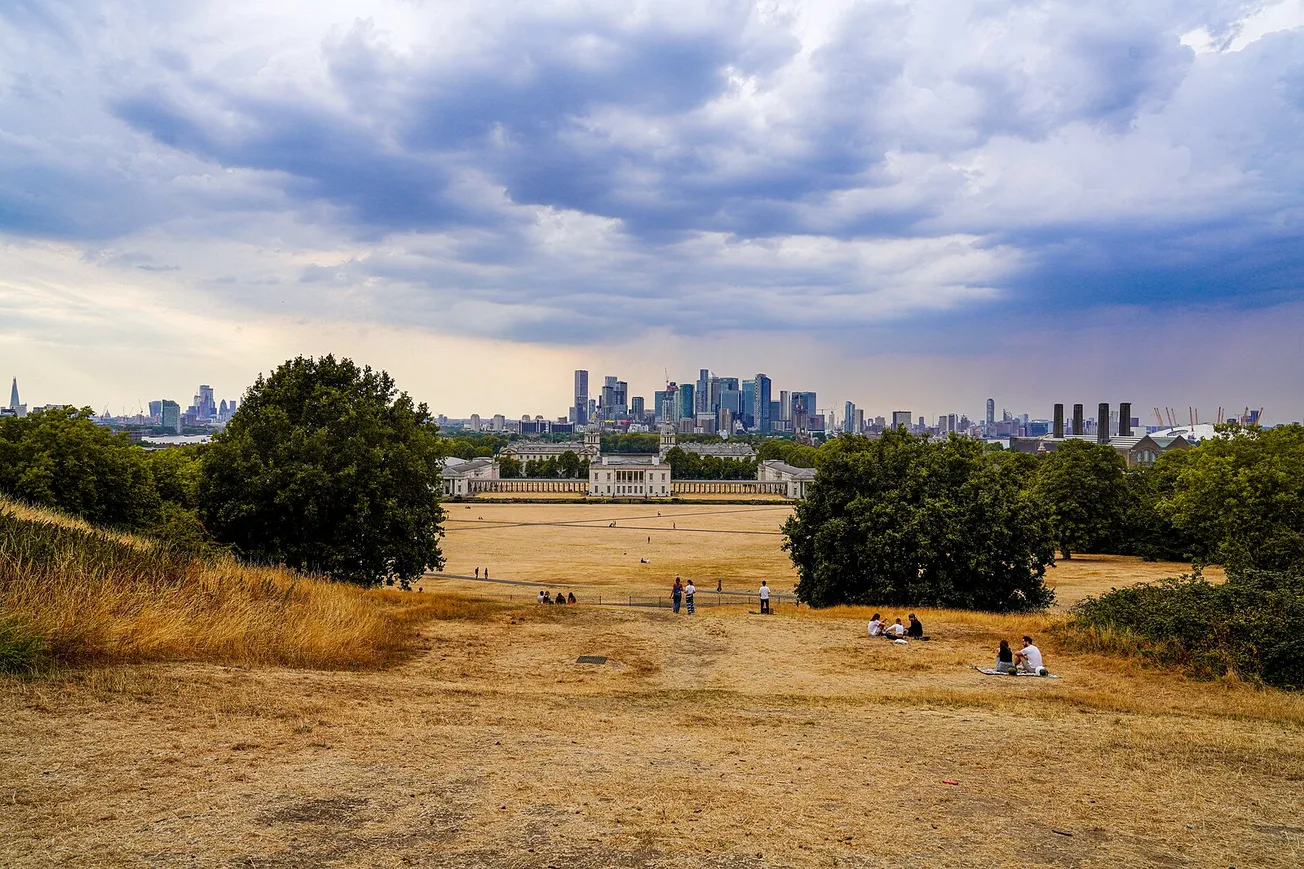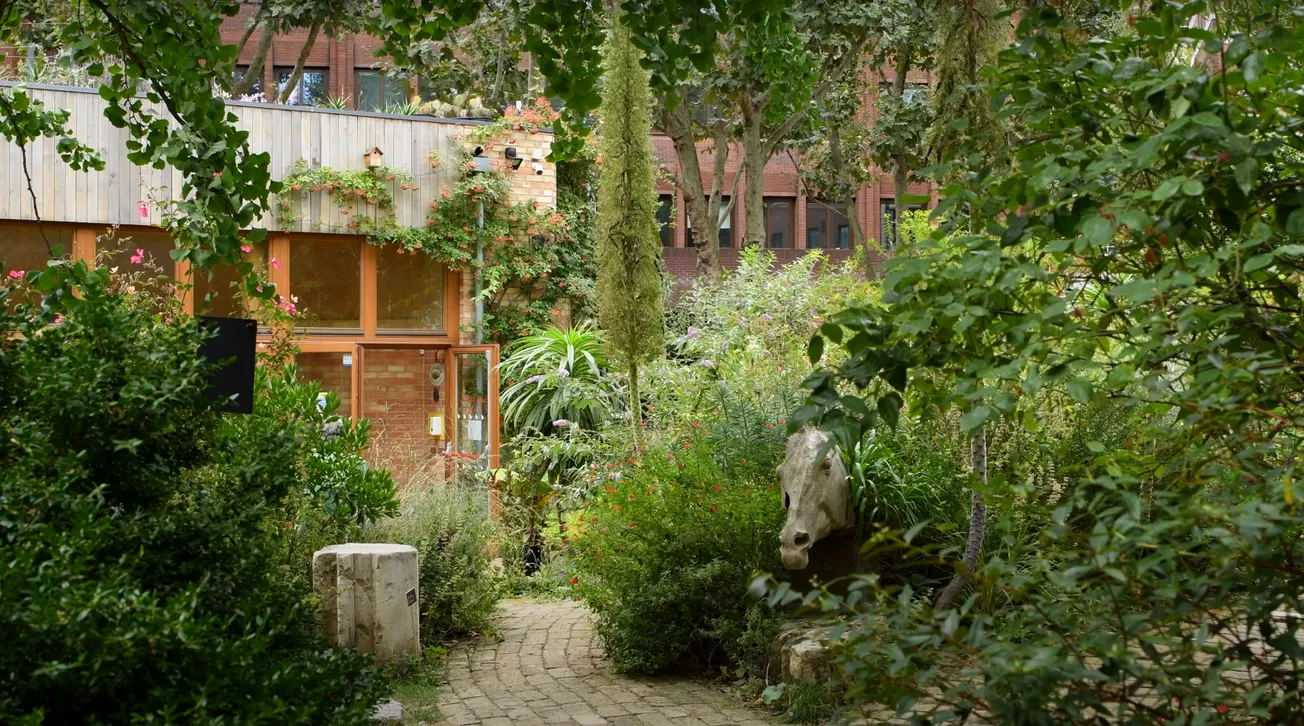Why is everybody talking about The Yellow Bittern right now? In today's story, Hannah Williams visits the self-consciously anachronistic restaurant to find out what the fuss is all about
When I arrive to lunch at The Yellow Bittern, my dining companion is already waiting for me, strong-jawed and arched-eyebrowed, smile like a candle flame, eyes sharp and dark and deep. Of course, he’s silent – he’s been dead for a hundred years, his embalmed body on public display in Red Square – but who hasn’t, at times, wished that their date would let them speak uninterrupted? And, for that matter, who hasn’t wished their date to be a pencil sketch of the founder of the Soviet Union, Comrade Vladimir Ilyich Ulyanov, hanging on the wall of London’s most controversial new restaurant?
Aside from the portrait of Lenin, my fellow diners at the 2pm sitting seem to be either travellers (the pile of suitcases at the front of the room is large and growing) or well-to-do Londoners here for a treat. “It’s something special, or so I hope”, the man next to me tells his dining companion; the two are old colleagues, and occasionally catch up over a nice meal. He tells me he lives locally and was recommended the place by friends.
The reason why I’m eating a solo lunch under Lenin’s commanding gaze is altogether more cynical. It may already be known to you, if you’re the kind of person who keeps track of epicurean drama, the media take-economy or overly online London discourse (or all three). If not, let me summarise: the Yellow Bittern is a restaurant and leftwing(ish) bookshop run by chef and self-professed Marxist Hugh Corcoran and Luncheon magazine editor Lady Frances Armstrong-Jones (the daughter of Princess Margaret’s husband Antony Armstrong-Jones, 1st Earl of Snowdon). It is designed as a paean to the long, boozy London lunch of yesteryear, and professes to be a place of abandon, of steamed-up windows and wine-glowed cheeks and tongues slicked quick with butter.

Despite this stated desire for excess, in both aesthetic and function the Bittern is a place of repeated, insistent onlys and nos. You can only go for lunch and only on Monday to Friday. You can only pay in cash. And you can only book by ringing or sending a postcard (I was sceptical that people were actually doing this but, while there, saw one arrive with my own eyes; more were pinned to the bookcase), there is no website. You can only find out the wines on offer by asking Corcoran; there is no wine list, no prices. This glut of self-conscious anachronisms charmed early reviewers. “A doorway to life before everyone dulled,” read a moony-eyed Standard review; “a counterbalance to the modern world,” rhapsodised the New European.
But shortly after the Bittern opened, Corcoran took to his personal Instagram – a curious move, considering the restaurant’s staunch offline stance – to rant about diners who, he said, were treating the restaurant like a “public bench.” They had negated the contract to “eat and drink with some sort of abandon… at the very least, order correctly, drink some wine, and justify your presence in the room” (the latter a fundamental misunderstanding of the point of a restaurant, I fear, and curiously antithetical to Corcoran’s earlier assertion that he “believes in a democratic space.”) The approbation was near instantaneous, scalding – screenshots floating around group chats, diatribes on private social media accounts – and soon bubbled over from social media to the rest of the internet eco-sphere. The fake Google reviews flooded in, the think-pieces began, the nationals sensed blood.
Corcoran waved off accusations of elitism in a follow-up post, which, as always, made things much worse. “Any member of the organised working class can afford a meal such as this once a week or once a month,” he asserted, failing to reckon with the fact that the Bittern yearns for the return of a type of dining that exists – and has always existed – exclusively for those flush with both time and money. In a different post, he called the criticisms a “defence of consumerism.” It seemed almost aggressively out of touch for an avowed Marxist-Leninist whose bookshop is stocked with “a wide range of everything from Eastern-European Jewish Marxism to Irish Absurdism.”
As is often the cycle of these things, the backlash began to receive its own backlash. “Customers in restaurants are constantly wrong – owners are right to fight back,” argued the Telegraph. In Vittles, Jonathan Nunn positioned the Bittern as the corrective to a “London dining scene [that] has become full of the same restaurants with the same menus all trying to attract the same customer.”

The Bittern has been repeatedly framed in this context, celebrated as a reaction to the preponderance of small-plates offerings on the London restaurant scene – Corcoran himself announced that “little sharing plates [have] ruined dining.” And it’s true that the restaurant is a departure from the Mediterranean-inspired aesthetic of somewhere like, say, Bancone. But where the Bittern lovers and haters both go wrong is in positioning the restaurant as exceptional, rather than an expected continuation of the thing the London dining scene loves above all else: its own past.
Hanging on the walls at the Bittern are antique maps and paintings, as well as a Miner’s Strike banner, a thrilling paper-cut of red on an otherwise blank section of wall. There are multiple images of Samuel Beckett, all chiaroscuro and cheekbones, who acts as a kind of lodestar for the venture. Otherwise, things are sparse: terracotta floor; wooden chairs and tables; small sprigs of flowers. “It’s very quirky,” says the man next to me. “It’s like you’re at Dennis Severs’ house.” To my mind, it feels a little like an immersive tourist experience of Sweetings, the venerable 135-year-old restaurant on Queen Victoria Street, also only open for weekday lunch. But the latter’s age imbues it with a delightful sense of camp that a new restaurant – and especially one as self-serious as the Bittern – simply cannot have; a louche, out-of-time decadence, like an older gentleman wearing velvet.
The Bittern’s kitchen is minimal, consisting of two induction hobs and a small oven, all behind a counter at the back of the restaurant. On the day I am there, the menu is as follows: for starters, soda bread (£6), radishes and butter (£6), leek and potato soup (£7), egg salad (£7); for mains, Dublin coddle (£20), roast guinea fowl (£25); a green side salad (£6); and for pudding, Irish cheeses (£14), rice pudding (£7) and apple crumble (£7). Everybody around me orders the radishes, which arrive resplendent with foliage, but otherwise unadorned. “Beautiful!” cries an American woman at a table across the room; “Well, that’s what it says on the tin,” says the lady next to me, rather less enthused.
I am a pescatarian and so cannot eat any of the mains – the perils of the offline restaurant – which leads me to worry I’ll inspire a wrathful Instagram post. Instead, I choose soda bread (good), leek and potato soup (fine), egg salad (fine), rice pudding (great) and one single glass of white wine (sorry, Hugh). The man next to me chooses the Dublin coddle, which he says is ok, “but the portion is very small… two sausages for £20!”

The general character of the food is ‘rustique’, if we’re using contemporary gastronomical parlance, or ‘peasant food’, if we’re feeling less polite. But this has been the prevailing mode of expensive food in London for decades now; St John celebrates its thirtieth birthday this year, Rochelle Canteen its twentieth. In its refusal to even countenance the idea of good plating, the food in the Bittern is merely the apotheosis of the trend, leaving you “muttering about having been served school dinners,” as Jay Rayner put it. But its homage-to-tradition cooking remains the prevailing vernacular of many of London’s much-loved, much-vaunted openings of recent years: everything from Café Cecilia to Sessions Arts Club to Lyle’s to BRAT.
In fact, the Bittern’s meat-heavy offering and living-museum aesthetic put me most in mind of the Devonshire, the wildly popular pub and restaurant that opened last year off Denham Street. Like the Bittern, the Devonshire is a retrofit, designed to emulate a classic Soho French-Irish boozer; an ode to nostalgia itself. But almost every recent launch of a bar or restaurant in the city features a painted sign with a faux-patina or a Victorian scrubbed-wood panel – in short, a huge amount of effort to ensure the new looks plausibly old.
The snake-hiss seduction of the word authenticity remains potent; it doesn’t matter if it’s real, it just needs to be convincing. People don’t want a modern-look gastropub anymore – they want the Plimsoll, with its vintage cigarette advertisements and freshly installed antique floorboards, or its sister restaurant Tollington’s Fish Bar, a real high-street chippy turned seafood restaurant, its 70s Formica interior retained. Tollington’s opened a few months before the Bittern; in a neat quirk, both establishments procured the services of the same luxury paint specialist.
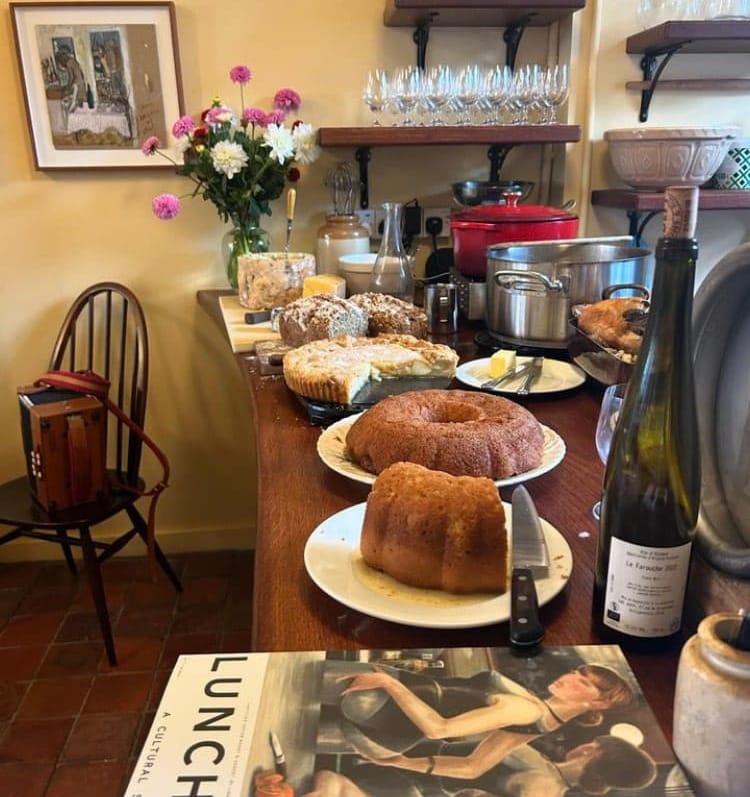
It isn’t any real mystery why these places are adored, while the Bittern has been somewhat reviled. Reviews and public opinion were initially warm for the restaurant, and probably would’ve continued to be, had Corcoran not treated us to his innermost thoughts on our failures as both diners and human beings. The conversation, then, became one about hypocrisy: the fact that a Marxist and an aristocrat have opened a restaurant that scolds diners for not quaffing enough bottles of Beaujolais at lunch during a time when many people have little money.
But look past that, and the Bittern is simply the epitome of the deep conservatism of a prominent section of the London restaurant scene, its retrograde fetishisation of a Disney World-ified version of the past. Dasvidaniya, comrade.
Please share the online version of this story to spread the word and let your friends know about The Londoner. Thank you for your help.

Comments
How to comment:
If you are already a member,
click here to sign in
and leave a comment.
If you aren't a member,
sign up here
to be able to leave a comment.
To add your photo, click here to create a profile on Gravatar.

